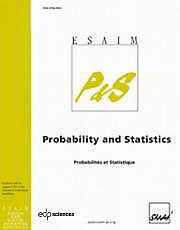No CrossRef data available.
Article contents
Discrete Lundberg-type bounds with actuarial applications
Published online by Cambridge University Press: 19 June 2007
Abstract
Different kinds of renewal equations repeatedly arise in connection with renewal risk models and variations. It is often appropriate to utilize bounds instead of the general solution to the renewal equation due to the inherent complexity. For this reason, as a first approach to construction of bounds we employ a general Lundberg-type methodology. Second, we focus specifically on exponential bounds which have the advantageous feature of being closely connected to the asymptotic behavior (for large values of the argument) of the renewal function. Finally, the last section of this paper includes several applications to risk theory quantities.
Keywords
- Type
- Research Article
- Information
- Copyright
- © EDP Sciences, SMAI, 2007




